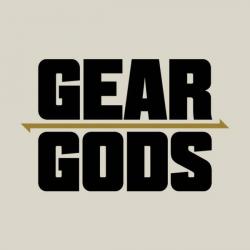
As part of our partnership with Swedish recording software company Toontrack for Metal Month all November, Gear Gods will be bringing you a series of exclusive interviews and features to highlight Toontrack’s new products designed specifically for the metal recording engineer and player. Check out last week’s interview with Jason Suecof, Mark Lewis and Daniel Bergstrand if you didn’t happen to catch it yet.
The latest new tool in Toontrack’s arsenal of products designed for metal is the Andy Sneap EZmix pack, an expansion pack for EZmix 2 that allows you to instantly dial in guitar and bass tones heard on some of the heaviest records of all time. Sneap’s resume speaks for itself; he’s produced and/or mixed records by Obituary, Arch Enemy, Nevermore, Testament, Killswitch Engage, Opeth, Megadeth, Exodus, Amon Amarth and Carcass, to name but a few. Simply put, he’s one of the all time best, and now you can take advantage of some of the tones it’s taken him years to develop. The Andy Sneap EZMix pack focuses primarily on guitar and bass tones but also includes a selection of settings for lead vocals, background vocals and drums. Learn more about the Andy Sneap EZmix pack and purchase it here.
To celebrate the release of his mix pack, we landed an exclusive interview with Sneap to talk recording techniques, records he’s worked on, pieces of gear he can’t live without and more.
What is the first instrument you start with in a new mix?
Andy: It’s always a case of balancing the drum kit first, the low end in the kick depending on the player style. I’ll usually get a good rough mix up and running and copy those setting to other songs in the session, and by the end of doing that I’ll have fine-tuned the basic settings even more and come back around to song one again. I could always keep going with mixes so it’s good we have deadlines.
Is there one instrument (including vocals) you think is harder to get right than any other? If so, which, why and are there any workarounds you usually end up falling back on?
Cymbals and bass. Cymbals are so dynamic and it really depends on the drummer and the way they’ve been recorded. Out of everything I’ve mixed, bad overheads are the biggest pain. A lot of times I find myself having to paste hits in due to bad edits and bad mic placement. Bass is tough because a lot of the time the bass player is in the band just to make up the numbers. It’s always a nice surprise to find a bass player that can play solid and play for the song. See Peter Baltes of Accept for the best example of this.
What is the single most important piece of hardware equipment in your mix arsenal?
Now I’d say it’s my SSL AWS 900. I love having a desk again. I’m enjoying the best of both worlds: I’ll get my mixes together in the box and then in the last week I’ll bus out through the desk and add that analogue smack and sheen. I think it’s got to do headroom too; I just find the mixes breathe better when I do this.
What is the single most important piece of software equipment in your mix arsenal?
The Metric Halo Channel Strip. I can’t mix drums without it now.
Name one album you wished you had engineered.
AC/DC’s Back in Black. I feel the band never reached their full potential and may have gone on to sell some records had I been involved. Fantastic example of a timeless record.
Which album in your discography are you most satisfied with overall in terms of sound?
That depends what day of the week it is. I find it very difficult to be objective and listen to records I’ve worked on so I actually avoid it. It’s always quite funny when something I’ve done is played in a bar or club I’m in and I’ll stand there trying to remember what it is. I’m usually pleasantly surprised, though.




